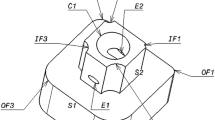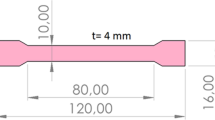Abstract
Across many industries, additive manufacturing, also known as 3D printing, is being recognized more and more as an innovative manufacturing technology for the next generation. The automotive industry, especially, has paid huge attention to additive manufacturing, and actively applies it to their design, research, development and manufacturing processes. Selective laser sintering (SLS) in additive manufacturing is emerging and popular, and is often used to produce jigs and fixtures for cost benefits and efficiency in the manufacturing industry. However, the application of additive manufacturing is still limited due to the lack of dimensional stability of 3D printed parts associated with changes in temperature and humidity. This paper examines the effect of humidity changes on the dimensional stability of 3D printed parts made by the SLS process. The test results demonstrated changes in relative humidity may result in design specification violation in terms of dimensional requirement while in use.
Similar content being viewed by others
References
Jang, S. H., Oh, S. T., Lee, I. H., Kim, H.-C., and Cho, H. Y., “3-Dimensional Circuit Device Fabrication Process Using Stereolithography and Direct Writing,” Int. J. Precis. Eng. Manuf., Vol. 16, No. 7, pp. 1361–1367, 2015.
Ho, C. M. B., Ng, S. H., and Yoon, Y.-J., “A Review on 3D Printed Bioimplants,” Int. J. Precis. Eng. Manuf., Vol. 16, No. 5, pp. 1035–1046, 2015.
Guo, N. and Leu, M. C., “Additive Manufacturing: Technology, Applications and Research Needs,” Frontiers of Mechanical Engineering, Vol. 8, No. 3, pp. 215–243, 2013.
Gausemeier, I. J. and Echterhoff, N., “Thinking Ahead the Future of Additive Manufacturing -Future Applications,” http://www.innovations-wissen.de/uploads/tx_publicationscrud/pdfs/Thinking_ahead_the_Future_of_Additive_Manufacturing_-_Future_Applications__2_.pdf (Accessed 14 JUL 2017)
Frost & Sullivan, “World Rapid Prototyping Equipment Markets,” Subscription No. N191-01, 2007.
Lee, C.-M, Woo, W.-S., Baek, J.-T. and Kim, E.-J., “Laser and Arc Manufacturing Processes: A Review,” Int. J. Precis. Eng. Manuf., Vol. 17, No. 7, pp. 973–985, 2016.
Eshraghi, S., Karevan, M., Kalaitzidou, K., and Das, S., “Processing and Properties of Electrically Conductive Nanocomposites Based on Polyamide-12 Filled with Exfoliated Graphite Nanoplatelets Prepared by Selective Laser Sintering,” Int. J. Precis. Eng. Manuf., Vol. 14, No. 11, pp. 1947–1951, 2013.
Yang, Y., Yarka, C., Cao, J., and Ehmann, K., “RETRACTED ARTICLE: Feasibility of Using Copper (II) Oxide for Additive Manufacturing,” Int. J. Precis. Eng. Manuf., Vol. 15, No. 9, pp. 1961–1965, 2014.
Petrovic, V., Vicente Haro Gonzalez, J., Jorda Ferrando, O., Delgado Gordillo, J., Ramon Blasco Puchades, J., and Portoles Grinan, L., “Additive Layered Manufacturing: Sectors of Industrial Application Shown through Case Studies,” International Journal of Production Research, Vol. 49, No. 4, pp. 1061–1079, 2011.
Bourell, D. L., Watt, T. J., Leigh, D. K., and Fulcher, B., “Performance Limitations in Polymer Laser Sintering,” Physics Procedia, Vol. 56, pp. 147–156, 2014.
Shen, J., Steinberger, J., Gopfert, J., Gerner, R., Daiber, F., et al., “Inhomogeneous Shrinkage of Polymer Materials in Selective Laser Sintering,” Proc. of Solid Freeform Fabrication Symposium Proceedings, pp. 298–305, 2000.
Clare, A. T., Chalker, P. R., Davies, S., Sutcliffe, C. J., and Tsopanos, S., “Selective Laser Melting of High Aspect Ratio 3D Nickel-Titanium Structures Two Way Trained for MEMS Applications,” International Journal of Mechanics and Materials in Design, Vol. 4, No. 2, pp. 181–187, 2008.
Meredith, R. and Hsu, B. S., “Dynamic Bending Properties of Fibers: Effect of Temperature on Nylon 66, Terylene, Orlon, and Viscose Rayon,” Journal of Polymer Science Part A: Polymer Chemistry, Vol. 61, No. 172, pp. 271–292, 1962.
Quistwater, J. M. R., and Dunell, B. A., “Dynamic Mechanical Properties of Nylon 66 and the Plasticizing Effect of Water Vapor on Nylon,” Journal of Polymer Science Part A: Polymer Chemistry, Vol. 28, No. 117, pp. 309–318, 1958.
Dupin, S., Lame, O., Barrès, C., and Charmeau, J.-Y., “Microstructural Origin of Physical and Mechanical Properties of Polyamide 12 Processed by Laser Sintering,” European Polymer Journal, Vol. 48, No. 9, pp. 1611–1621, 2012.
Ilkgün, Ö., “Effects of Production Parameters on Porosity and Hole Properties in Laser Sintering Rapid Prototyping Process,” M.Sc. Thesis, Middle East Technical University Ankara, 2005.
Ku, C. W. J., Gibson, I., and Cheung, W. L., “Selective Laser Sintered Castform Polystyrene with Controlled Porosity and Its Infiltration by Red Wax,” Proc. of Solid Free Form Fabrication Symposium, pp. 107–114, 2002.
Chatterjee, A. N., Kumar, S., Saha, P., Mishra, P. K., and Choudhury, A. R., “An Experimental Design Approach to Selective Laser Sintering of Low Carbon Steel,” Journal of Materials Processing Technology, Vol. 136, No. 1, pp. 151–157, 2003.
Haffane, N., Benameur, T., and Vergnaud, J., “Hardness Variation of a Thermoset in Contact with a Liquid,” Polymer Testing, Vol. 16, No. 3, pp. 259–270, 1997.
Lassila, L. V. J., Nohrström, T., and Vallittu, P. K., “The Influence of Short-Term Water Storage on the Flexural Properties of Unidirectional Glass Fiber-Reinforced Composites,” Biomaterials, Vol. 23, No. 10, pp. 2221–2229, 2002.
Liu, X. Y. and Jiang, J., “Environmental Effects on the Dimensions of SL5195 Resin,” Rapid Prototyping Journal, Vol. 9, No. 2, pp. 88–94, 2003.
Park, J., Tari, M. J., and Hahn, H. T., “Characterization of the Laminated Object Manufacturing (LOM) Process,” Rapid Prototyping Journal, Vol. 6, No. 1, pp. 36–50, 2000.
Suwanprateeb, J., “Comparative Study of 3DP Material Systems for Moisture Resistance Applications,” Rapid Prototyping Journal, Vol. 13, No. 1, pp. 48–52, 2007.
Author information
Authors and Affiliations
Corresponding author
Rights and permissions
About this article
Cite this article
Kwon, D., Park, E., Ha, S. et al. Effect of humidity changes on dimensional stability of 3D printed parts by selective laser sintering. Int. J. Precis. Eng. Manuf. 18, 1275–1280 (2017). https://doi.org/10.1007/s12541-017-0150-0
Received:
Revised:
Accepted:
Published:
Issue Date:
DOI: https://doi.org/10.1007/s12541-017-0150-0




